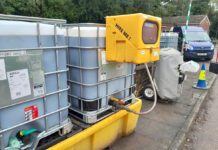
Australian water utility SA Water has recently spoken about its trialing of a custom analytics platform as a means to manage real-time data from its wastewater network, and stay on top of issues including odour and emissions.
As an April article in Utility Magazine explains, hydrogen sulphide (H2S) generated in wastewater systems attacks concrete and other structures. To minimise corrosion, SA Water is ventilating its wastewater network through the use of induct and educt vents
incorporated within wastewater mains and pump stations. This minimises moisture content in the air in the network and reduces the amount of H2S converting into sulphuric acid, in turn extending the life of the concrete wastewater assets.
The downside of this is that ventilating the sewer network means H2S is released into the environment, introducing the potential for odours. The levels might be relatively low, but the human nose is particularly sensitive to H2S gas.
Smells coming from the sewerage network here will be monitored by 88 H2S detection sensors and ten weather stations, to build a better understanding of odour behaviour and dispersion, and improve proactive management of the issue over time.
SA Water’s Senior Manager of Asset Management, Peter Seltsikas, said some odour emission is normal and in some cases necessary. The aim is to limit how noticeable it is for nearby residents.
“Inducts deliberately draw in fresh air and educts release small amounts of foul air, both of which help to extend the life of the pipes, but for the most part, these smells shouldn’t be detectable by people in the area,” Mr Seltsikas said.
The use of underground sensors are important here, which can be remotely monitored. “The weather stations monitor climatic conditions like wind direction and speed as well as ambient air temperature, which can impact the way odours move and are experienced outside our network.
“Weather is one of the reasons sewer odour is so intermittent, but if we can learn what it’s doing in near-real time, we could for example, time our network ventilation for when the community will be least impacted.”
Measuring network odour across a specific catchment area enables SA Water to model odour dispersion and begin to investigate practical and innovative methods for reducing the odour, said the article.
This could include flushing the wastewater network, adjusting the operation of pump stations, controlling vents to ventilate during times when odours are least likely to be detected and optimising current chemical dosing practices.






